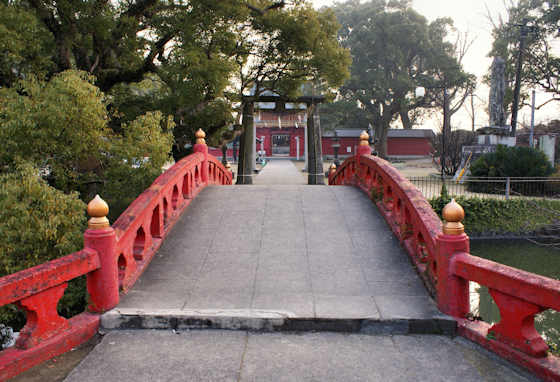Monday, October 3, 2022
Kotokuin Temple 7 Kyushu Pilgrimage
Saturday, October 1, 2022
Path of Light at KitanoTenmangu Kurume
Thursday, September 29, 2022
Guardians of Kitano Tenmangu in Kurume
Zuijin was the original term for imperial guards, and they are most often shown holding bows and arrows.
Unusual, and I'm not sure of their significace, but there were also this trio of red horses...... more on the shrine tomorrow....
Tuesday, September 27, 2022
Joruriji Temple 46 Shikoku pilgrimage
Saturday, September 24, 2022
To the First Bend in the River
First Bend in the River
A little further and I come to the first of several concreted slopes, the consequence of landslides. Twice in the past decade the train line was closed down because of a landslide in roughly this spot. Each time it took more than a year to get it open again. Obviously, no-one of importance uses the train line otherwise it would have been fixed sharpish methinks.
It is my intention to stay on this bank all the way to the source of the river and then come back downstream on the other bank.
Thursday, September 22, 2022
Gesshoji Temple Matsudaira Tombs
Gesshoji Temple Matsudaira Tombs
Consequently, the grounds are rather spacious, and not that well visited.
Labels:
carvings,
lafcadio hearn,
matsudaira,
matsue,
temple,
turtle
Tuesday, September 20, 2022
Myooin Temple 2 Shikoku Fudo Myo Pilgrimage
Japan Travel
I visited in mid-December, and the fallen leaves on the bushes were striking....
Labels:
seitaka doji,
shikoku fudo,
shingon
Subscribe to:
Posts (Atom)
































































